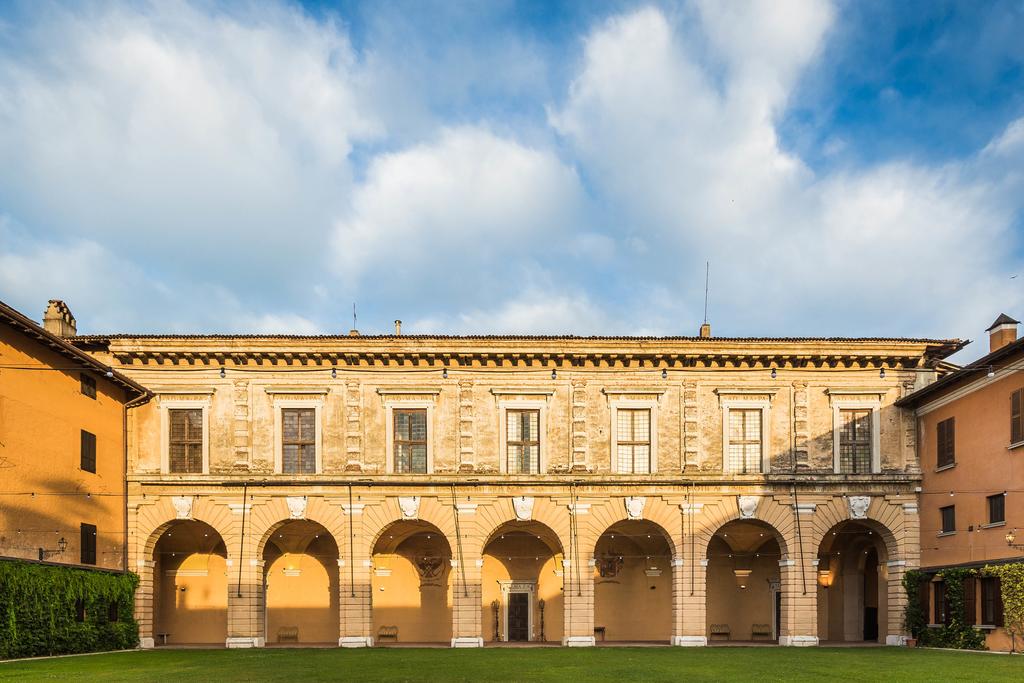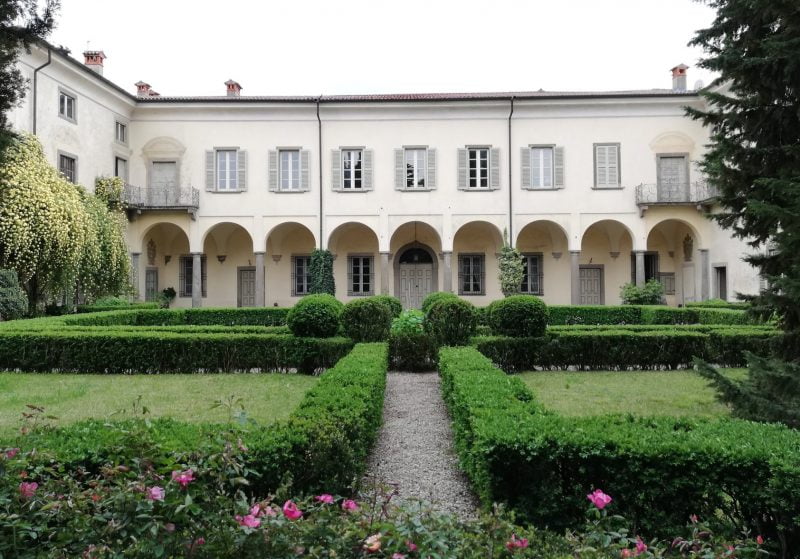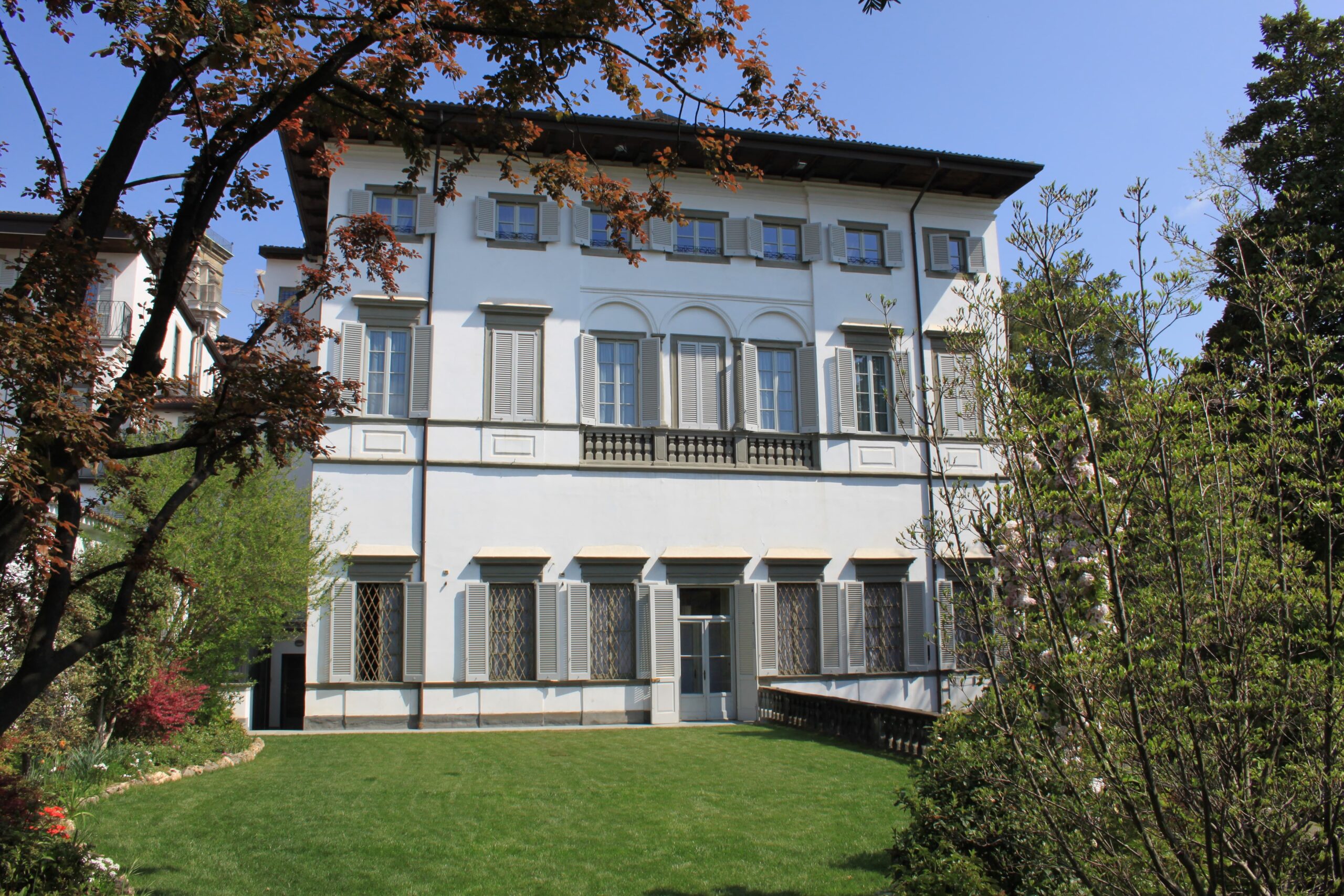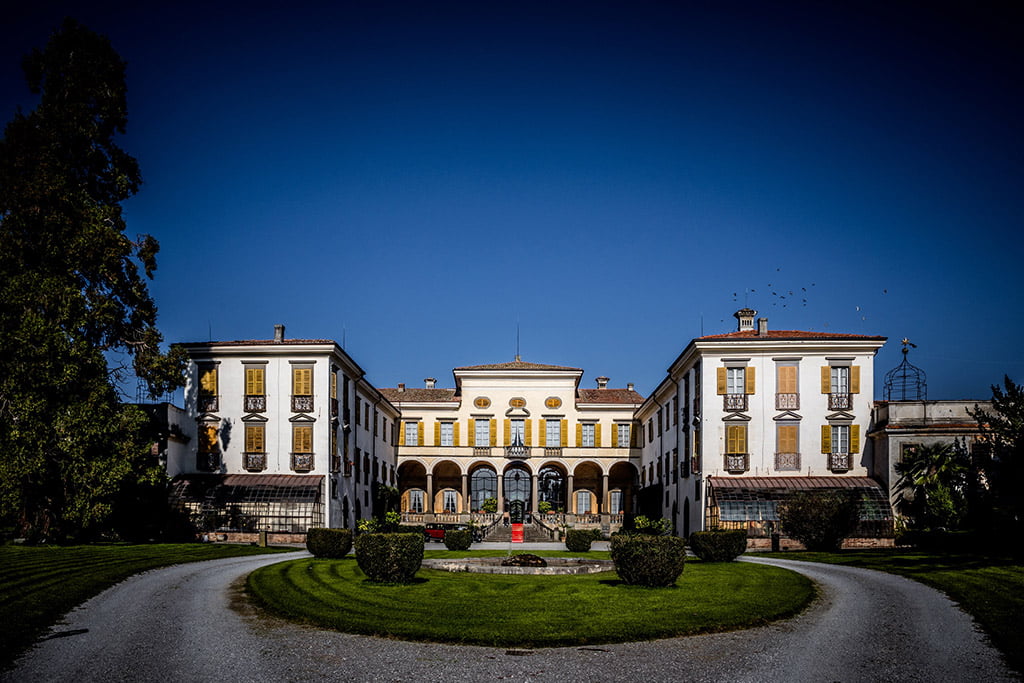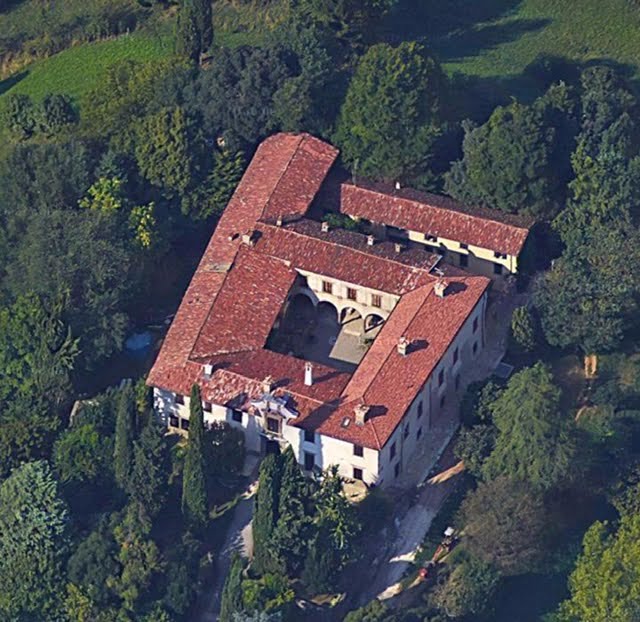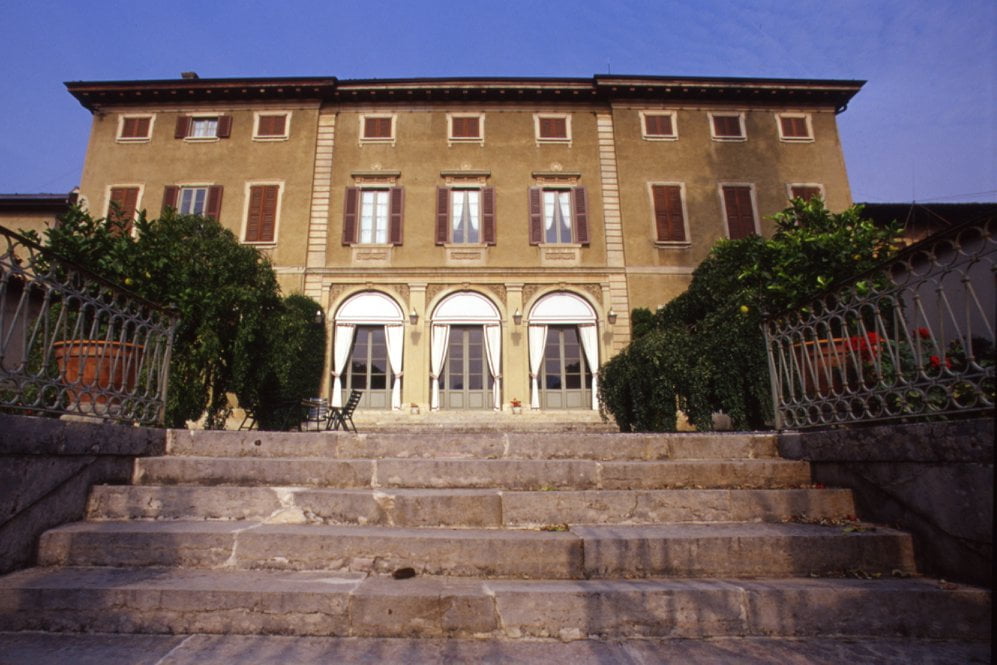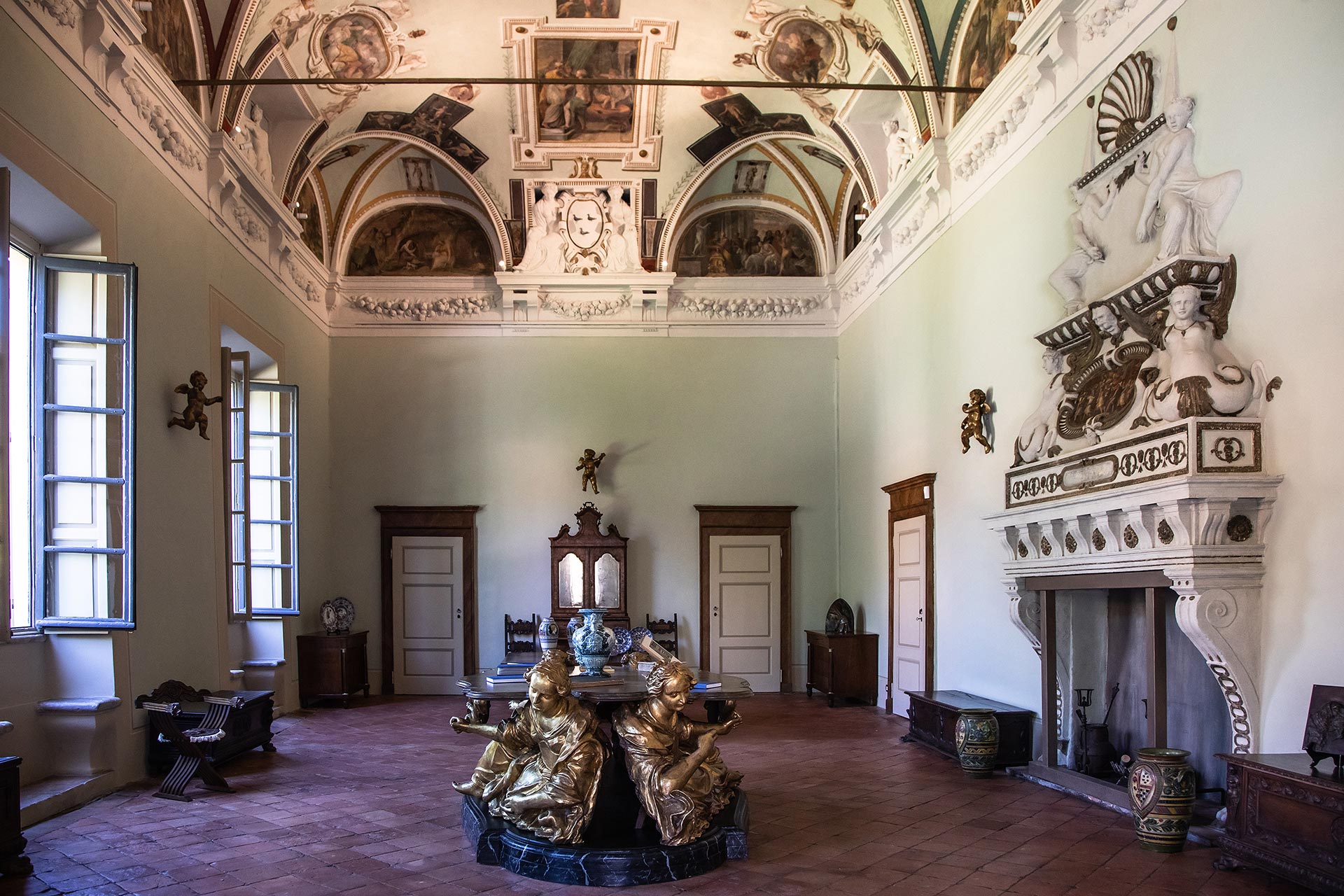After the signing of the Peace of Lodi treaty between the Duchy of Milan and the Venetian Republic in 1454, Francesco Sforza commissioned his natural son Tristano to construct a tower in order to defend the border along the River Oglio between Soncino and Calcio, as stipulated in the treaty. Known as Tristan’s Tower, it was erected on the territories of “Calciana”, in contraposition to Roccafranca, located on the Venetian side of the river. Tristano, who had a sole daughter named Elisabetta, bestowed the fiefdom upon Marquis Galeazzo Pallavicino as part of her dowry. In the first half of the 16th century, Adalberto Marquis Pallavicino, Galeazzo’s legitimate son, decided to build a sumptuous residence where he could spend time with his friends, distancing himself from what he described as ‘destructive mentalities’. His motto, ‘SIBI ET AMICIS’ (for oneself and for friends), is still visible, engraved into a frieze on the stone above the porticoes of the façade. In the 19th century, the last Marquis Pallavicino, who had no sons, chose to pass on his home and Palazzo to his grandchildren, the offspring of his daughter and Count Barbò, and from that moment the property was known as Palazzo Barbò. Presently, it is owned by the female descendants of the Barbò family. The interiors of the building are adorned with valuable frescoes painted in the 16th century by the Campi brothers, while Tristan’s Tower, though modified, retains its original fortified appearance.

